Vertiv’s 5 Biggest 5G Trends That Data Center Partners Should Know
Vertiv’s Martin Olsen tells solution providers about the biggest 5G trends in today’s market, including the most mature use cases and when telecoms expect to have 100 percent 5G coverage.
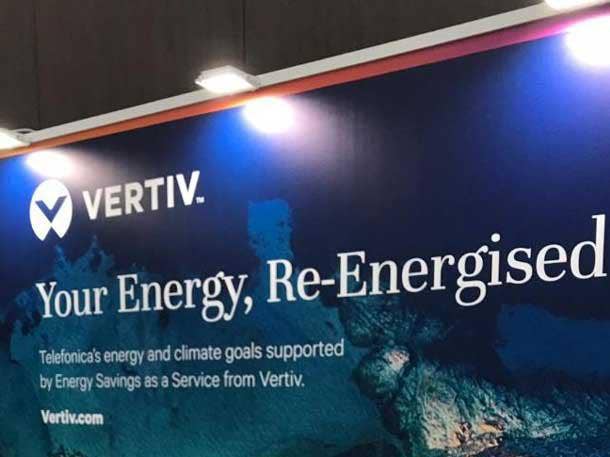
5G Market Trends Vertiv Wants Partners To Know About
Data center equipment and services specialist Vertiv is preparing itself and its channel partners for the massive opportunities ahead as the world of 5G continues to inch closer to fruition.
At the 2019 Best of Breed conference Tuesday, Vertiv’s Martin Olsen detailed for solution providers some of the biggest trends stemming from a recent 5G survey the company conducted with 451 Research on more than 100 telecom providers.
“5G could be a very big enabler for some of the big [edge] use cases, but not all of them,” said Olsen, vice president of global edge solutions at Vertiv. “The biggest challenge around 5G is the lack of solid business use cases or business cases for rolling this out. While the telecom operators are very ready to do this, we need business cases to roll this out.”
The Columbus, Ohio-based data center company, named to CRN’s 2019 Data Center 50, is pushing its partners and R&D innovation engine to prepare for the rollout of 5G, including enhanced data center energy efficiency products. Olsen is responsible for leading and developing Vertiv’s global products and technology road map around PDUs, UPSes, rack cooling and management systems. Here are the five biggest 5G trends Olsen said partners should know about heading into 2020.
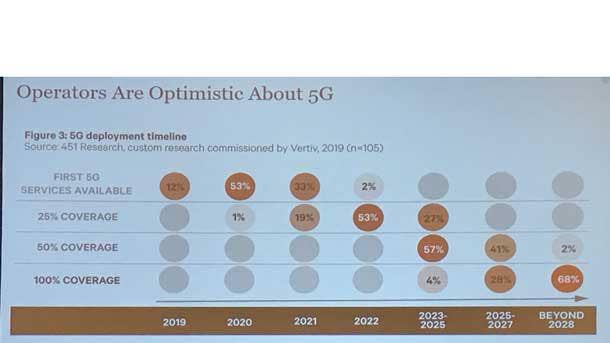
5G Coverage Is Years Away From General Availability
In Vertiv’s 5G report, the company asked 105 major telecommunications providers where they stood in terms of their 5G deployment timeline. Approximately 68 percent of respondents said they do not expect to be providing 100 percent 5G coverage until beyond 2028, with 57 percent of telecoms expecting to reach 50 percent 5G coverage between 2023 and 2025.
“It’s very clear that they’ve spent a lot of resources and effort to get their sites ready for 5G. When you talk to a Verizon or AT&T, they’re very much prepared to turn any one of these technologies on because 5G is a combination of different technologies that have nothing to do with 5G,” said Olsen. “What we heard is that really not until another three years and beyond is when we’re going to start to see 5G really having proliferated out.”
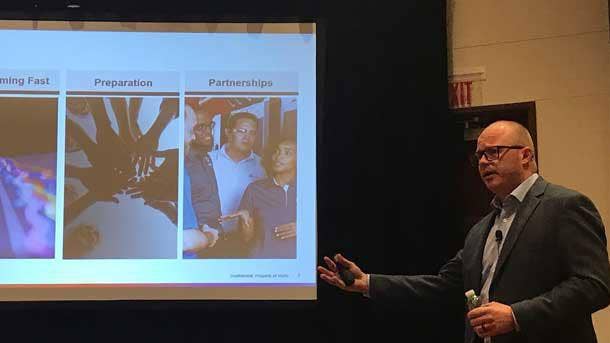
The Most Mature 5G Use Cases
In terms of 5G, Olsen said telecoms have yet to truly monetize 5G offerings while there is also a major lack of use cases thus far. He said there are currently three mature use cases for 5G.
“The three key use cases that are the most mature are going to be, No. 1, within retail. Automate retail as much as possible. Then No. 2, online gaming, believe it or not, is an extremely mature use case and they’ve really been able to monetize it with a business model behind it. There’s a lot of people on these gaming platforms and willing to pay [a lot],” said Olsen. “The [third is] within content distribution networks, which will be your Netflixes and your Hulus.”
In the long term, 5G will enable three major grouping of use cases: enhanced mobile broadband, ultra-reliable low-latency communications and massive machine-type communications, according to Vertiv’s report. The latter targets the efficient and secure connection of millions of devices without overloading the network.
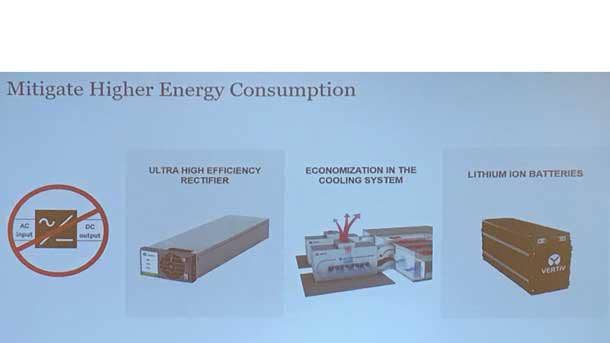
5G Will Drive Data Center Energy Efficiency
One of the most important technical enablers of 5G is creating more energy-efficient network infrastructure as 5G is widely expected to raise overall energy costs. Energy-saving tactics will be varied and address every layer of infrastructure, from intelligent networking products that enter sleep mode during idle time to the use of artificial intelligence and new cooling techniques.
“Energy efficiency becomes so important as your energy consumption across the board is going to go up,” said Olsen. “What we heard back [from the survey] was that the power consumption of any one of these [telecom] sites are going to go way up. A cell tower site today, for instance, has probably about 40Kw to 50Kw of power going to it. Now that we’re putting in multi-access edge computing there, that requirement now goes up to 100Kw to 200Kw in a site like that.”
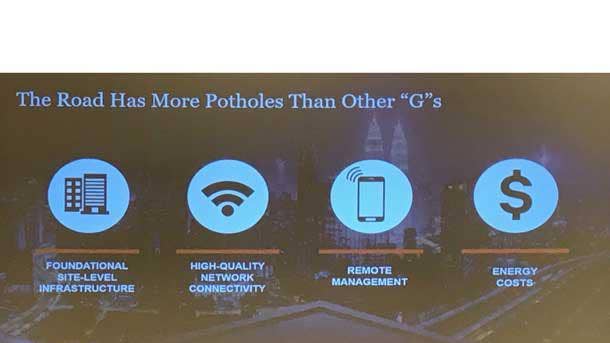
The Key To Making 5G Available
Olsen said the road to 5G has “more potholes” compared to the transition of 2G to 3G and 3G to 4G.
“The key to be able to launch 5G as well as some of these advanced use cases is that new site-level infrastructure is going to be out there because you don’t just fire this up. You need compute. You need storage. You need storage and networking in places we haven’t seen before. We’re going to put [infrastructure] in places where we haven’t ever put it before,” said Olsen. “It’s going to go into a roadside structure. You have to think about the security—the physical security. The environment it sits in and any hazards around it.”
He said 5G infrastructure will be mostly remotely monitored and need innovative technology built in. “The fact that you can’t get to this equipment easily, it needs to be remotely monitored,” he said. “You’ll have to figure out how to work the redundancy and self-healing technologies right into it.”
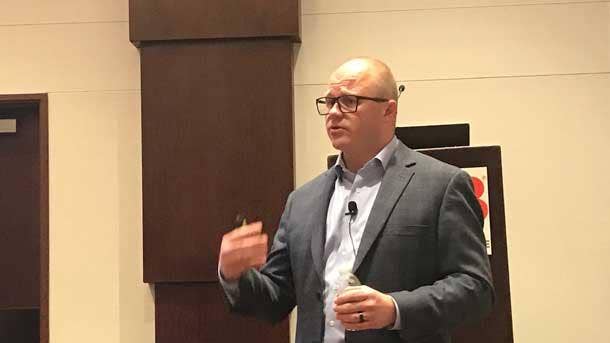
Autonomous Driving Cars ‘A Decade Away’
Autonomous driving cars have been front and center in the 5G discussion for years as 5G will usher in lower latency, improved bandwidth and faster machine-to-machine communications. However, while the 5G evolution is beginning for most telecom providers in the next few years, autonomous driving cars are even further away, according to Olsen.
“Everybody loves to talk about autonomous driving cars. Well, that’s for sure—I’m going to bet on this one—still about a decade away from even being remotely possible,” said Olsen. “There’s absolutely autonomous transportation logistics happening now. You go to a mining site where you have trucks and vehicles driving around autonomously but, again, there’s not really a big requirement for 5G there.”